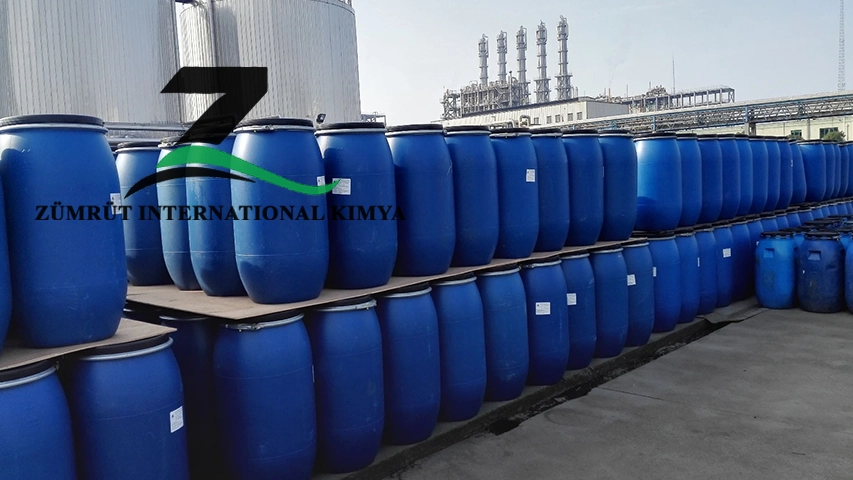Supplier of Sodium Laureth Ether Sulfate (SLES)

Introduction
At ZÜMRÜT International Kimya Co., we are a leading supplier of SLES (Sodium Lauryl Ether Sulfate), providing high-quality surfactants to global industries. Our SLES is a key ingredient for manufacturers in cosmetics, personal care, household cleaning, and industrial applications, delivering exceptional foaming, cleansing, and emulsifying performance. (Contact Us)
Why Choose ZÜMRÜT as Your SLES Supplier?
As a trusted SLES supplier, ZÜMRÜT International Kimya Co. offers:
-
Premium SLES 70%: High-performance Sodium Lauryl Ether Sulfate for superior foaming and detergency.
-
Global Delivery: Efficient logistics for timely supply worldwide.
-
Eco-Friendly Production: Sustainable practices meet global safety standards.
-
Flexible Solutions: Customized packaging and quantities for your needs.
-
Industry Expertise: Years of experience as a reliable chemical supplier.
What is SLES (Sodium Lauryl Ether Sulfate)?
SLES is a versatile anionic surfactant known for its excellent foaming and cleansing properties. Used in personal care, household cleaners, and industrial products, our SLES supply ensures consistent quality and performance for your formulations.
Types and Grades of SLES We Supply
At ZÜMRÜT International Kimya Co., we offer a range of SLES types and grades to meet diverse industry needs:
-
SLES 70% (Standard Grade): Our flagship product, a highly active concentration ideal for shampoos, body washes, dishwashing liquids, and laundry detergents.
-
SLES 28% (Low Active Grade): Perfect for cost-sensitive formulations or applications requiring lower viscosity, such as liquid soaps and light-duty cleaners.
-
SLES Low Salt Grade: Designed for sensitive formulations, offering reduced salt content for enhanced clarity and stability in cosmetics and personal care products.
-
SLES High Purity Grade: Optimized for premium personal care products, ensuring minimal impurities for gentle, skin-friendly formulations.
Applications of SLES
Our Sodium Laureth Ether Sulfate from ZÜMRÜT International Kimya Co. excels in:
-
Personal Care:
-
Shampoos, body washes, and facial cleansers for rich lather and gentle cleansing.
-
Bubble baths for long-lasting foam.
-
-
Household Cleaning:
-
Dishwashing liquids and laundry detergents for grease and stain removal.
-
All-purpose and floor cleaners for streak-free results.
-
-
Industrial Use:
-
Car wash soaps and engine degreasers for powerful cleaning.
-
Textile processing for effective wetting and emulsification.
-
-
Cosmetics:
-
Creams, lotions, and toothpastes for stable emulsification and texture.
-
Benefits of SLES from ZÜMRÜT
Partnering with us as your Sodium Lauryl Ether Sulfate supplier provides:
-
High Foaming: Rich, stable foam for enhanced user experience.
-
Effective Cleansing: Removes dirt and grease efficiently.
-
Cost-Effective: Superior performance at competitive prices.
-
Versatile: Compatible with various formulations and pH ranges.
-
Compliant: Meets global safety and regulatory standards.
Why SLES is Essential for Your Business
With the SLES market projected to reach US$2.0 billion by 2031, our high-quality SLES helps you meet growing demand in personal care, cleaning, and industrial sectors. As a reliable supplier of SLES, ZÜMRÜT ensures your products deliver top performance and customer satisfaction.
Partner with ZÜMRÜT International Kimya Co. Today
ZÜMRÜT International Kimya Co. is your trusted SLES supplier, delivering quality and reliability to elevate your products. Let us power your formulations with premium Sodium Lauryl Ether Sulfate.
Contact Us to Buy SLES
Ready to source high-quality SLES? Contact us today for competitive pricing and fast global shipping:
📞 Phone/WhatsApp: +971 50 720 9246
📧 Email: info@causticsodaco.com
🌐 Website: www.causticsodaco.com
Choose ZÜMRÜT as your supplier of SLES and create products that stand out in the market!
TECHNICAL DATA SHEET OF Sodium Laureth Ether Sulfate
| SPECIFICATION | STANDARD | RESULTS | UNCERTAINTY IN MEASUREMENT | ISIRI NO |
|---|---|---|---|---|
| Molecular weight(g/mol) | 384 | 384 | ± 0.2 | ISIRI 5476 |
| Free Oil | Max 2.5 | 2.3 | ± 0.15 | ISIRI 6835-a |
| Active Matter | (68-72) | 70.1 | ± 0.19 | ISIRI 3178 |
| Color (Hazen) | Max 30 | 11 | ± 1 | ISIRI 3513-a |
| Sodium Sulfate | Max 1.5 | 0.64 | ± 0.03 | ISIRI 3513 |
| pH(5%(w/w)) | (7-9) | 7.9 | ± 0.06 | ISIRI 6835 |
| 1.4 Dioxane | Max 50 | 37 | ± 0.8 | ISIRI 6835-a |
| Appearance | Colorless or light yellow | Light yellow | – | Eye Measurement |
| NaCI % | Max 0.5 | 0.23 | ± 0.02 | ISIRI 6835 |
| Oxidants (ppm) | 0 | 0 | ± 0.5 | ISIRI 6835 |
| Fe(ppm) | Max 20 | ˂7 | – | ISIRI 6835 |
| Formaldehyde (ppm) | Max 250 | 0 | – | ISIRI 6835 |
| Heavy Metals (ppm) | Max 20 | ˂1 | – | ISIRI 6835 |
| Chemical Formula | R-CH₃-(CH₂)ₙ-(OCH₂CH₂)ₘ-OSO₃-Na n=11-13 m=2
CAS N:68585-34-2 |
Read About LABSA(CLICK)

